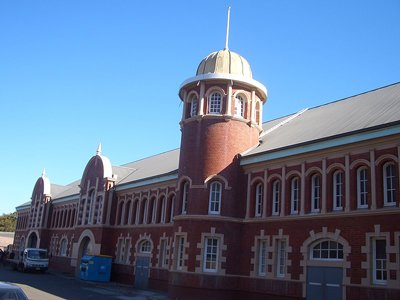Subscribe to CX E-News
On May 1st the Royal Hall of Industries was taken off Sydney’s event venue market and given to the Sydney Swans for their new HQ. The 5,500 square metre space has been used for decades, most significantly as the annual venue for the huge Gay and Lesbian Mardi Gras party that caps the event. The Mardi Gras contributes many millions of dollars to the Sydney tourism industry, which is struggling against reports internationally that Sydney’s nightlife is very poor following five years of lockout laws.
When announcing the RHI would be ‘repurposed’, the government said that by retaining the adjacent Hordern Pavilion, and with the inclusion of an ‘event space’ within the new Swans floorplan, the site would still be available for the Mardi Gras. In fact, the event space within the RHI renovation is actually what they call a ‘Multi-purpose indoor facility available for community use and public events such as junior club nights, school graduations, functions’ has no access for plant or production to the multi purpose field of play so no boomlift for rigging or fork access. The floor is an expensive sports floor which, no doubt, will preclude many essential pieces of production equipment.
Also note there are no public toilets directly accessible from the sports floor unless guests at an event are able to use the locker rooms. This possibly means no licence for public events.
IDEOLOGY AGAINST THE ARTS
Further, the NSW Government seems to have a problem with truth. The recent walkout of builder Lend Lease at the Sydney Football Stadium revealed that the ‘one contract to demolish and build’ that was announced before the state election in March, was actually not one contract at all. It had a quit provision, and Lend Lease did indeed walk away, saying they could not deliver the project for the agreed $700m+.
Now the RHI redevelopment faces contradictions as well, with the original announcement saying the government would contribute $20 million to both the RHI and some Hordern Pavilion refurbishments. This turns out to be an untruth, as none of that money is directed at the Hordern. The total AFL investment in the RHI is $55m, with $15m coming from the federal government.
Sydney’s event industry now has less floor space than when the current government came to power eight years ago. It closed the 12,000 seat Sydney Entertainment Centre and the Darling Harbour Convention Centre, leaving Sydney without those venues for three years while a ‘design and construct’ deal then returned the International Convention Centre, with it’s 8,000 seat venue.
The builder won a windfall, converting the Entertainment Centre site into five high rise apartment towers, while the smaller replacement venue at ICC cannot accomodate most of the sport and larger touring shows that the Entertainment Centre did. As to the ICC, many industry observers have complained that the venue was value engineered with the design and construct delivering deficiencies such as pillars in the lower exhibition hall, low floor weight loadings in The Gallery (due to a cheaper concrete slab design) and bad access to the Parkside Ballroom – which runs right through The Gallery.
Melbourne recently expanded their MCEC to make it the largest in Australia, while Brisbane’s BCEC has increased its event volumes every year since an expansion earlier this decade.
One small glimmer of hope for Sydney is that the developer-centric State Government is currently reviewing the lockout laws. During the review, nightclub boss Justin Hemmes said that late night takings at his signature Ivy venue had fallen 55% since the laws, which are the cause of the complete closure of the Kings Cross nightclub precinct.
The other two industry concerns in NSW are the ‘war on festivals’ (a punitive government licensing regime that imposes impossible costs on all outdoor events) that has seen many small and large festivals closed or relocated interstate this year, and the mooted announcement of a new operator for the shuttered Theatre Royal. If the theatre does eventually reopen, it will move Sydney’s theatre market up. Sydney will then have just under half the number of theatre seats as Melbourne.
A final note on Sydney is a high visibility police operation allied with the war on festivals and one that delegates at the recent Eventing the Future conference in New Zealand point blank refused to believe is called ’strip search’. Currently deployed outside every music festival, and at sites like Sydney’s Central Railway Station, it involves a large number of police forming a cordon with sniffer dogs. Anyone the dog indicates, or anyone who ‘looks nervous’, is taken behind a screen and stripped naked. They are then told to squat and cough. Males are directed to lift their genitals, so the police can check whether they have pills taped or hidden.
This terrifying invasive attack on civil liberties is a hot topic on social media across the world, and clearly is deterring tourism. The ideology behind all these attacks on venues, culture, the arts, theatre and music is hard to understand. But so was the ‘greyhound ban’ where the entire sport of greyhound racing was told to shut down. That uproar did produce a backflip, but the routing of the arts didn’t. The state government won the recent election.
Subscribe
Published monthly since 1991, our famous AV industry magazine is free for download or pay for print. Subscribers also receive CX News, our free weekly email with the latest industry news and jobs.












